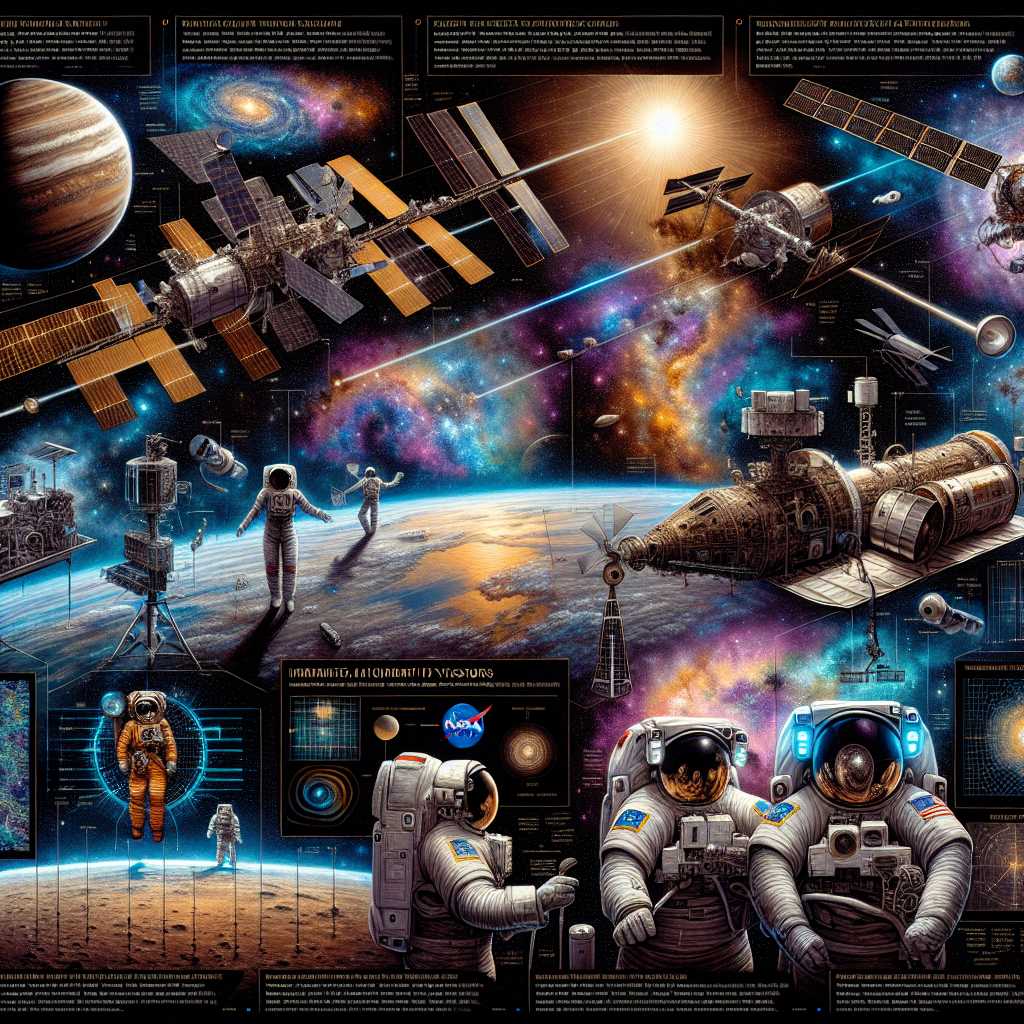Exploring the Final Frontier: NASA and Its Role in Space Discovery and Innovation
NASA, the National Aeronautics and Space Administration, is synonymous with space exploration and scientific discovery. Established on July 29, 1958, the United States federal agency has led the country’s space exploration efforts, contributing to significant advancements in science and technology. From landing the first humans on the Moon with the Apollo missions to deploying rovers on Mars, NASA’s influence extends beyond our skies to impact our understanding of the universe and our place within it.
Origins and Evolution of a Space Giant
In the wake of World War II, during an era fueled by geopolitical competition and scientific curiosity, NASA was born out of the need for a coordinated effort to explore space. The launch of Soviet’s Sputnik satellite in 1957 sparked an urgency within the United States to establish an organization dedicated to aerospace research and exploration, ultimately leading to NASA’s creation. Shedding its predecessor’s military ties (NACA – National Advisory Committee for Aeronautics), NASA was founded with peaceful purposes—to explore space for human knowledge and benefit.
Manned Missions and Moon Landings
NASA’s journey into manned spaceflight began with Project Mercury, which aimed to put an American astronaut into orbit around Earth. Succeeded by Gemini and Apollo programs, NASA quickly expanded its ambitions. The crowning achievement came with the 1969 Apollo 11 mission when humans—Neil Armstrong and Buzz Aldrin—first set foot on the lunar surface. This event not only marked a pivotal moment in history but also heralded a new era in technological innovation driven by space exploration goals.
Pioneering Robotic Exploration
NASA’s reach extends well beyond manned missions. Unmanned spacecraft have explored the sun, the Moon, and distant planets. Pioneers 10 and 11, Voyagers 1 and 2, the Galileo spacecraft, Cassini to Saturn, and New Horizons flying past Pluto are just a few examples of NASA’s successful probes. The agency has also successfully deployed rovers such as Sojourner, Spirit, Opportunity, Curiosity, Perseverance, and Ingenuity (the Mars Helicopter) to Mars’ surface to analyze rocks, soil, and climate while searching for signs of past life.
Studying Earth from Above
NASA isn’t solely focused on the great beyond; Earth observation is also a significant part of its mission. Satellites like Landsat have been monitoring Earth’s land resources for decades, aiding in the areas such as agriculture management and deforestation tracking. NASA collaborates with other institutions on projects like the Sea-viewing Wide Field-of-view Sensor (SeaWiFS), monitoring ocean biosphere health and aiding climate research.
International Collaborations and Contributions
NASA’s commitment to international cooperation is evidenced by partnerships such as the International Space Station (ISS), where astronauts from various countries live and work together in low Earth orbit. Collaborative endeavors expand human understanding and generate diplomatic ties in space science.
Advancing Aeronautics Research
The ‘Aeronautics’ in NASA is not merely historical: NASA continues to improve flight technologies through research on aerodynamics, flight control systems, and materials engineering. These innovations benefit not only space travel but commercial aviation as well.
Inspiring Education and Outreach
NASA has had an influential role in education by inspiring countless individuals to pursue careers in STEM (Science, Technology, Engineering, Mathematics). Programs like internships, scholarships, public lectures series like ‘NASA Talks,’ inspire future generations’ interest in space and science.
Future Explorations
NASA remains at innovation’s frontier with new projects designed to return humans to deep space travel. The Artemis program aims to land ‘the first woman and the next man’ on the Moon by 2024 as a precursor to more ambitious ventures like human exploration of Mars.
Budget Considerations and Critique
Funding is a persistent issue delimiting NASA activities. With high costs associated with space missions, finances from the federal budget dictate how ambitious NASA’s plans can be. Despite critiques about spending on space instead of Earthly concerns, proponents argue investing in NASA fosters technological strides benefiting all humanity.

